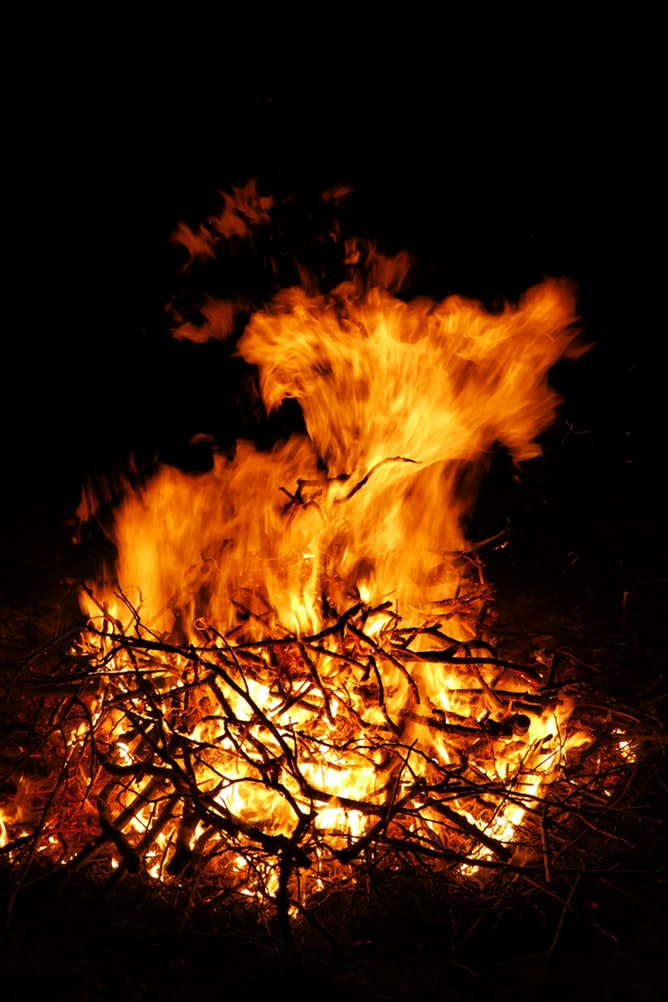One of my topics of interest as a therapist has been reading research into the impacts of chronic loneliness on people. We are truly social animals that thrive—physically, emotionally, mentally, spiritually—in connection with others. When we feel safe, understood, loved and loving, valued, and have regular physical contact with other humans.
In a recent tarot reading, more prescient than I’d imagined, I drew for the Spirit of this Age the card The Hermit. It is the work thrust upon us, horrifying and rife with potential. To be asked, and in some cases ordered, to let go of the trips and events we looked forward to experiencing. To avoid our big community events, the workplaces where we regularly play out our lives among colleagues, to minimize social contact. To spend time with ourselves and the people with whom we cohabitate.
Much is being said about the demands of this moment to practice mutual aid. And with that is relearning how to be alone.
Loneliness is a social hunger, according to John Cacioppo, who researched it extensively. When we go too long without social connection, that loneliness begins to affect our system in ways that resemble trauma—more anxiety, escalated mistrust, difficulty regulating and calming ourselves, increased sensitivity to real or perceived rejection.
Social connection and touch—consensual touch, whether it is hugging, hand holding, arm around the shoulder, massage, cuddling, or sexual touch—help to soothe us, promotes calming hormones that decrease the effects of stress on the body, and helps us to release natural opioids that ease experiences of pain. Our sense of meaning emerges in part from our relationships to others—how we are useful, how we are helpful, how we are influential.
Here’s a few interesting things. Loneliness is fed by mutuality in relationship. If your primary social contacts are people you pay or people who engage with you as a role instead of a person, that meets other needs but not social hunger. Also, loneliness differs from solitude in that the latter is chosen. When we feel we are alone and it’s not our choice, that becomes very painful.
As we practice being alone to decrease the spread of illness and stem the flood of patients to an overwhelmed and underfunded medical system, we might try some things.
Remind yourself that this solitude is a choice you are making to care for yourself and your community, and that can make a different choice. Each choice you could make offers its own personal and collective risk, but allow yourself to have the choice, and to consider your options and risks, and decide.
We each have different appetites for socialization, both our levels of hunger and ease of satiety. Some of us get lonely easily and need a lot of social connection, while for others simply getting a cup of coffee is more than enough contact. Don’t judge your level of need and consider ways to diversify social contact as you can. Call friends and family. Schedule video chats or text chats. Think of someone you’d like to get to know and reach out to them. We already have a great icebreaker. “Wow, this is a weird time. How are you holding up?”
At this time, where I live, all public interaction is not banned, mostly large groups. You may make some agreements with individuals you know to meet and connect in the ways that will serve you, knowing you’re sharing risk but also that if one of you gets sick you can give the other advance warning.
But with trying to make time to connect, and all the ways we distract ourselves, we may still reach moments where we feel trapped, isolated, and empty. There are times when we may choose to engage in numbing, soothing, checking out, or freaking out, and I do not fault anyone for that. We may also use this time to practice being companion to ourselves.
Meditation is one beautiful practice, and I offer a few guided ones that may be of help.
Journaling is another, whether using pen and paper, a computer, or narrating your thoughts into a recorder. You might simply journal about whatever is on your mind, then listen to it later. Or you might consider telling yourself your life story, writing about the moments that stick out to you, what was interesting about them, what they meant to you, how that meaning affected your later decisions.
For those who are interested in tarot and other kinds of divination, those are great frameworks for self-reflection. You could simply ask yourself a question, draw a card or stone, and then journal about what you think this tells you about your question.
Think about how your life has been lately, prior to pandemic. What have you enjoyed about it? What do you wish was different? What fears do you have about doing things differently? What are the risks? Given that we are a time in which extraordinary things that were once said to be impossible are now occurring, consider how you might use the malleability of the moment to change your life when the crisis passes. Do you like working from home and not commuting? What if you just… kept doing it? What do you imagine that would be like?

What is scariest and most beautiful is the potential for deep intimacy with yourself, to be exquisitely present to your full experience and be able to be with it without trying to fix it, suppress it, push it away, agree with it, or argue with it. A part of you feels bored, and you are there with it. A part of you feels restless, and you are there with it. A part of you says the world is falling apart, and you are there with it. Breathing. Feeling the contact of your body with the ground. Feeling how you are more than this thought and feeling.
If you are a spiritual person, you might take time to pray or engage in a longer practice. Deep practice helps us to have more space with our experience, which offers a buffer to the destabilizing effects of loneliness.
And if you can’t take it anymore, go for a walk. Be outside for a while, not necessarily interacting with folks but feeling the sun and air, spending time among trees and blooming flowers. Find a quiet place to sit and simply stay for as long as you can, still, watching what happens around you when you are quiet and still. Let yourself be enraptured by nature. I find this profoundly calming.
This time appears to be calling us to practice solitude and mutual aid, both aloneness and community-mindedness. I cannot think of a call to action that would better say “this is the dawning of the Age of Aquarius.”







